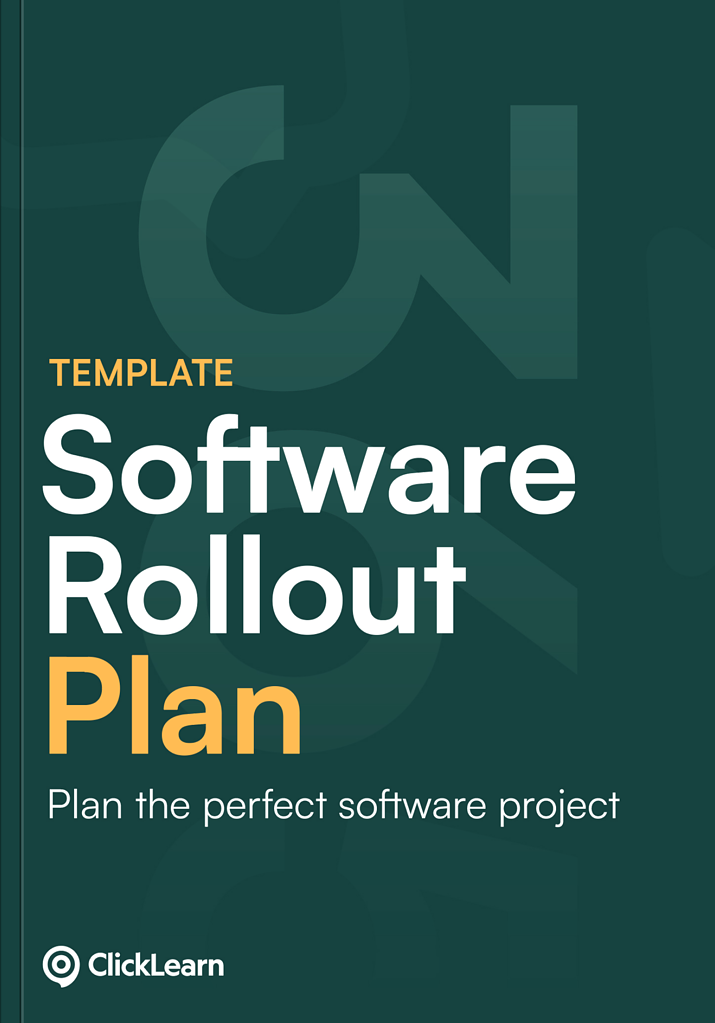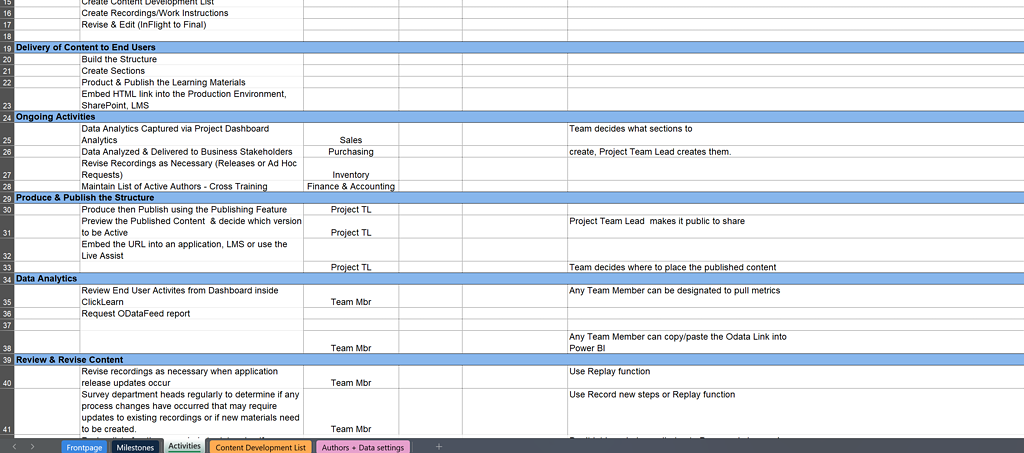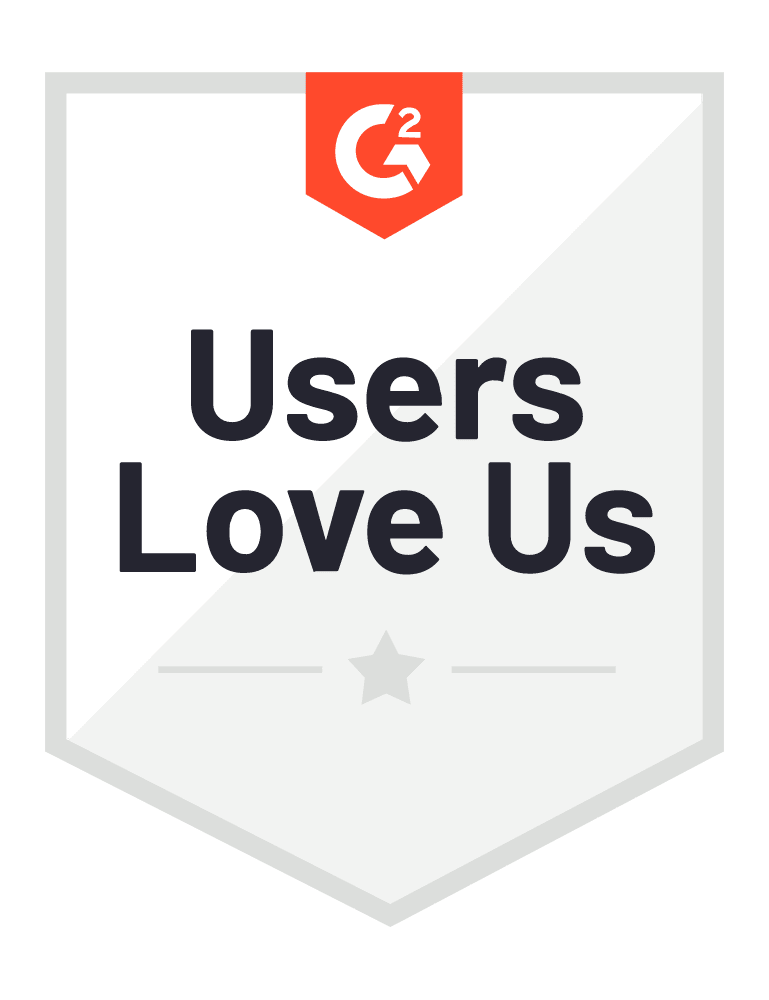Take control of your Salesforce implementation
Free template: Salesforce Software Rollout Plan
Ensure your Salesforce deployment goes smoothly with a professionally designed rollout plan template.
Rolling out Salesforce CRM, Sales Cloud, Service Cloud, or Marketing Cloud requires more than just flipping a switch — it demands structured planning, clear communication, and stakeholder alignment. Our Salesforce software rollout plan template makes it easy to organize every stage of your implementation, from initial setup to full user adoption.
Whether you’re starting fresh with Salesforce or optimizing an existing org, this template will help you streamline your rollout process.

- Expert-designed Oracle template
Created by implementation specialist Christine Eltz, this template is grounded in years of real-world experience across complex CRM deployments. With this tool, you gain a strategic roadmap that supports every phase of your Salesforce implementation.
- Trusted by professionals
Used by teams across industries, this template supports Salesforce rollouts of all sizes — from small startups customizing Sales Cloud to enterprises launching company-wide Service Cloud deployments.
- Immediate access
No waiting around — get immediate access to your Salesforce rollout plan and begin structuring your project today.



Great companies use ClickLearn
Best practices for a smooth Salesforce software rollout
A successful Salesforce software rollout plan goes beyond technical configuration. Follow these key practices to ensure your project launches smoothly:
Map out the entire process: Define the phases of your Salesforce rollout, including system setup, sandbox testing, data migration, training, and post-launch optimization.
Get stakeholder buy-in early: Involve sales managers, support leads, marketers, and executive sponsors from the beginning. Early engagement ensures alignment and faster adoption.
Test thoroughly in sandbox environments: Use Salesforce’s sandbox features to validate automations, workflows, and integrations before going live.
Deliver role-specific training: Different teams use Salesforce in different ways. Train sales reps, service agents, and marketers on the features they’ll use most to boost confidence and usage.
Measure success and iterate: Monitor KPIs like user adoption, conversion rates, and case resolution times to evaluate your rollout’s success. Use this data to refine your approach post-launch.
The role of feedback in a Salesforce rollout
Feedback is critical to the success of your Salesforce implementation — it ensures the system fits the real-world needs of your teams.
Here’s how to effectively use feedback:
Create simple feedback channels
Enable quick reporting via Slack, Salesforce Chatter, or regular check-in meetings. Make it easy for users to share what’s working and what’s not.Act on pilot group insights
Run a soft launch with a small team to gather valuable feedback on flows, permissions, and UI design before full rollout.Close the loop
Let users know their input matters by clearly communicating changes based on feedback. This boosts morale and drives adoption.

How to create a Salesforce rollout plan
Your Salesforce software rollout plan should give structure to every key phase of the project. Use this approach to build a comprehensive plan:
Define the why
Align your rollout with clear business goals — e.g., increasing lead conversion, improving support ticket response times, or gaining better pipeline visibility.Set clear milestones
Include tasks such as user account setup, system integrations, data mapping, training delivery, and post-launch review.Develop a communications strategy
Keep all stakeholders in the loop with regular updates and resources. Transparency builds trust and encourages engagement.Anticipate and mitigate risks
Plan for common Salesforce rollout challenges such as data integrity issues, change resistance, or process gaps.Establish post-launch support
Ensure that ongoing help is available for new users, feature enhancements, and unexpected bugs. This keeps momentum going after go-live.
Common mistakes in Salesforce rollout plans
Even with the best intentions, these common errors can derail a Salesforce deployment:
Underestimating the need for training
Salesforce is powerful — but not always intuitive. If users don’t understand how to use it, adoption will stall.
Poor data migration planning
Dirty or inconsistent data imported into Salesforce can cause major disruptions. Plan ahead with deduplication and validation checks.
Ignoring change management
Rolling out Salesforce changes the way teams work. Skipping structured change management can lead to confusion and pushback.
Failing to customize for different roles
Sales reps and support agents have very different workflows. Ensure that page layouts, reports, and dashboards are tailored for each user group.
No post-launch follow-through
A rollout doesn’t end on launch day. Ongoing support, feedback, and improvements are essential for long-term success.
Take control of your Salesfroce implementation
Download Salesforce Software Rollout Plan
This easy-to-follow Excel template helps you break your Salesforce deployment into manageable phases, align stakeholders, and drive user adoption with confidence.
Take the guesswork out of your Salesforce project — download the template now and lead your rollout like a pro.
Frequently asked questions on Salesforce rollout planning
It’s a structured guide that outlines how your organization will implement Salesforce, including key phases like setup, training, testing, and support.
Salesforce is highly customizable and often affects multiple departments. A rollout plan keeps the project focused, aligned, and efficient from start to finish.
Provide hands-on training, involve users early, tailor features to their roles, and show quick wins through custom dashboards and automations.
The biggest mistake is treating Salesforce as just another tool instead of a transformation in how teams manage customer data and processes. Without strong change management and training, adoption suffers.
It depends on the scope. A basic CRM rollout might take a few weeks, while a full implementation with complex automations and integrations can take several months.


